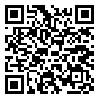Volume 6, Issue 2 (autumn-winter 2019)
DSME 2019, 6(2): 10-24 |
Back to browse issues page
Download citation:
BibTeX | RIS | EndNote | Medlars | ProCite | Reference Manager | RefWorks
Send citation to:



BibTeX | RIS | EndNote | Medlars | ProCite | Reference Manager | RefWorks
Send citation to:
eslamian H, zare Y. The relationship between Moral intelligence and teaching styles of faculty members in University of Medical Sciences . DSME 2019; 6 (2) :10-24
URL: http://dsme.hums.ac.ir/article-1-188-en.html
URL: http://dsme.hums.ac.ir/article-1-188-en.html
Abstract: (3873 Views)
Introduction: University faculty members need to have a good moral intelligence in addition to having the ability to use technical skills of teaching. The aim of this study was to determine the relationship between ethical intelligence and teaching styles of faculty members in Mazandaran University of Medical Sciences during the academic year of 2017-18.
Methods: This was a descriptive-correlational study. The statistical population consisted of all the faculty members, of which 191 were selected as the statistical sample. The data was collected using Grasha and Richman teaching styles (1996) and Anic and Kiel's ethical intelligence (2011) questionnaires. It was analyzed by SPSS 20 software using frequency, percentage, mean, standard deviation, Pearson correlation and regression tests.
Results: The most important findings of the research showed that there is the highest relationship between moral intelligence and faculty teaching styles (r = 0.78), the significant level is P <0.05. Another finding of the research showed that the teachers' moral intelligence had a significant predictive power of their teaching styles (B = 0.82, P <0.001). Also, the results showed that the moral intelligence variable could predict 55% of the teaching styles (R2 = 0.55).
Conclusion: The results of this study indicate the role of overall faculty members' moral intelligence in the application of different teaching styles by them.
Citation: Eslamian H, Zare Y. The study of the relationship between Moral intelligence and teaching styles of Faculty members in University of Medical Sciences. Journal of Development Strategies in Medical Education 2019;6(2):10-24.
Methods: This was a descriptive-correlational study. The statistical population consisted of all the faculty members, of which 191 were selected as the statistical sample. The data was collected using Grasha and Richman teaching styles (1996) and Anic and Kiel's ethical intelligence (2011) questionnaires. It was analyzed by SPSS 20 software using frequency, percentage, mean, standard deviation, Pearson correlation and regression tests.
Results: The most important findings of the research showed that there is the highest relationship between moral intelligence and faculty teaching styles (r = 0.78), the significant level is P <0.05. Another finding of the research showed that the teachers' moral intelligence had a significant predictive power of their teaching styles (B = 0.82, P <0.001). Also, the results showed that the moral intelligence variable could predict 55% of the teaching styles (R2 = 0.55).
Conclusion: The results of this study indicate the role of overall faculty members' moral intelligence in the application of different teaching styles by them.
Citation: Eslamian H, Zare Y. The study of the relationship between Moral intelligence and teaching styles of Faculty members in University of Medical Sciences. Journal of Development Strategies in Medical Education 2019;6(2):10-24.
Type of Study: Orginal |
Subject:
Special
Received: 2017/12/26 | Accepted: 2018/07/30 | Published: 2019/03/3
Received: 2017/12/26 | Accepted: 2018/07/30 | Published: 2019/03/3
Tables [PDF 81 KB] (145 Download)
Send email to the article author
| Rights and permissions | |
 |
This work is licensed under a Creative Commons Attribution-NonCommercial 4.0 International License. |








